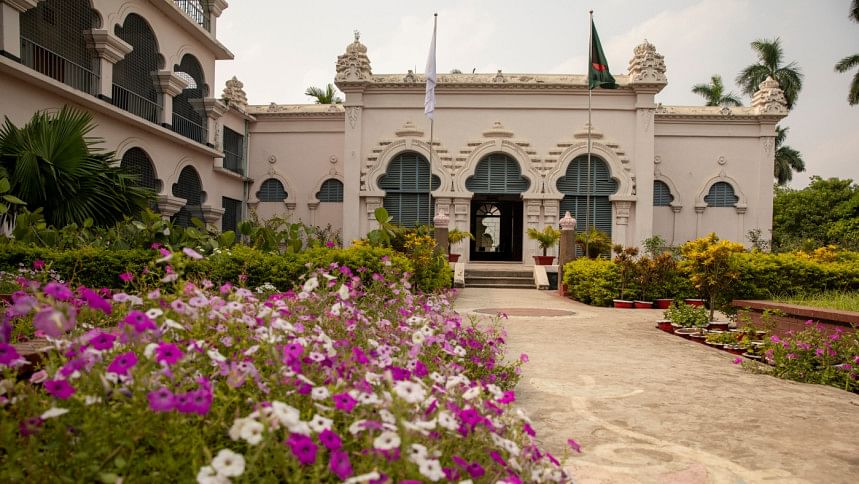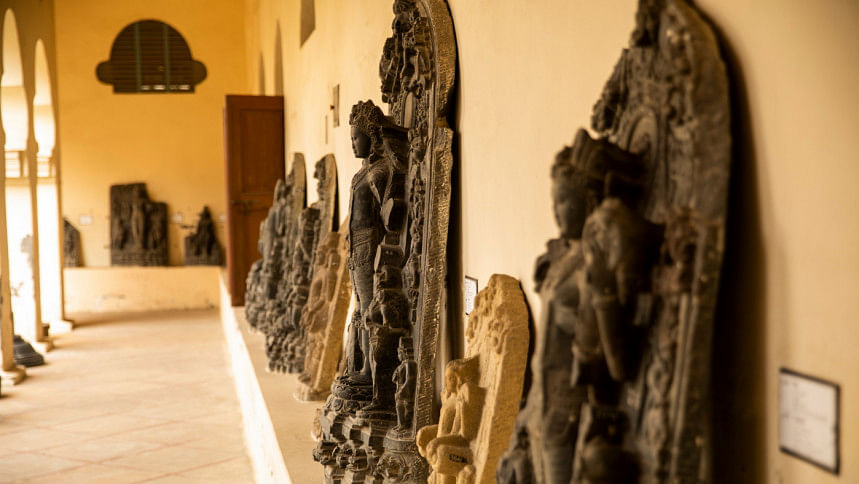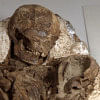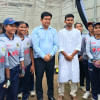Varendra Museum: A Review of the First Museum of Bangladesh

Museums are interesting points of attractions for travellers who like to know about history. If you are not a history buff, the artifacts draw attention of even the most unimpressed travellers. That being said, if you are visiting Rajshahi, you should drop by and visit the Varendra Museum.
The Museum
Officially called the 'Varendra Research Museum,' it is a research centre and popular visitor attraction maintained by Rajshahi University and it definitely helps that it's right at the heart of Rajshahi city. Established in 1910, this is the first museum of Bangladesh and within walking distance of Rajshahi College.
The museum nurtures a colourful and attractive front garden past the main entrance. As you walk past the colourful yard, you will have to pay a small entry fee at the counter before you can enter the actual museum itself. Opening at 10 AM, the museum closes at 5 PM during summer and 4:30 PM during winter season. It remains closed on Thursdays, Fridays and university off days. No cameras or photography is allowed and it is recommended that you respect the rules of the premises.
The Galleries
The museum has six galleries. Gallery One has collections from the Indus Valley Civilization along with partial collection from Somapura. It also hosts old Sanskrit, Arabic and Persian scripts. There are collections of hand written copies of the holy Quran that will leave you in awe as well as copies that are smaller than match boxes yet are perfectly legible.
Gallery Two through four have Buddhist and Hindu stone sculptures and modern wood sculptures. Intricately crafted stone sculptures of Hindu gods and goddesses rest against the walls along with the occasional metal sculpture.
Gallery Five offers mostly Buddhist sculptures and Gallery Six displays Arabic, Persian, Sanskrit and old Bengali stone inscriptions and sculptured stones of the Muslim period. The inner courtyard and corridors host more sculptures and Shivalinga's.
The Attractions
There are artifacts and sculptures of black basalt from as early as the 9th century. One can find sculptures arranged in a sequence, starting from 9th century, all the way to 12th century and some are from other time periods too. Sculptures of Shiva, Vishnu and Suryadev from different centuries are displayed here next to one another. And because they are set next to one another, the visitors themselves can compare the artifacts.

The conspicuous difference of the ages is reflected in intricacies, visualisation, finishing and imagination in these artifacts and how those changed over time. For example, the artifacts from 12th century are clearly much more detailed and smoothly finished compared to those of 9th century. But interestingly, the image of the gods had barely changed, if at all. The idols remained the same, this raises a number of questions for the curious, that will surely inspire you to know more about the history of this land, long before you and I came into existence.
There's another artifact here that is rather curious. It is a large stone piece, which has a mosque's meherab on one side while also hosting images of Hindu gods on the other, which would make one wonder about the histories behind the crafting of such an artifact given the ritualistic nature of it, and the two very different religions associated.
Unfortunately, there are a number of limitations of the museum and they cannot display the entirety of their collection in this establishment due to lack of space. It is however, still quite an attractive place to visit if you are in the neighbourhood. If you are visiting Rajshahi city, consider visiting Varendra Museum for a thought-provoking leisure hour.

 For all latest news, follow The Daily Star's Google News channel.
For all latest news, follow The Daily Star's Google News channel. 








Comments